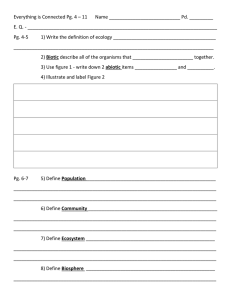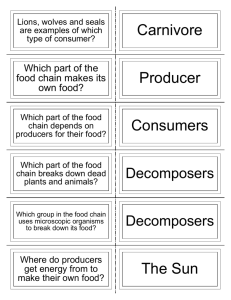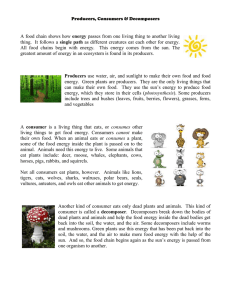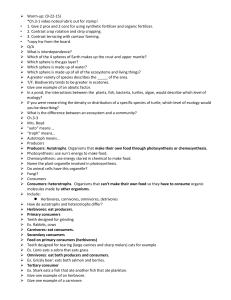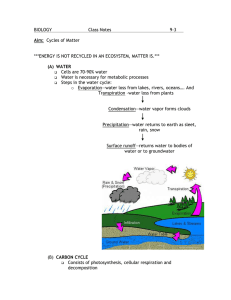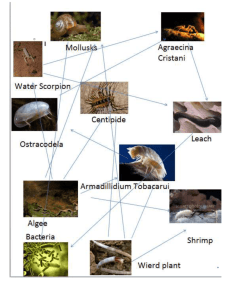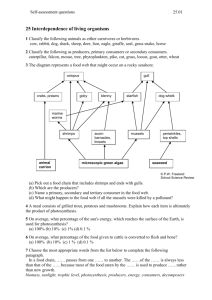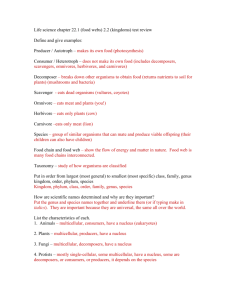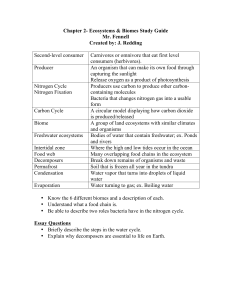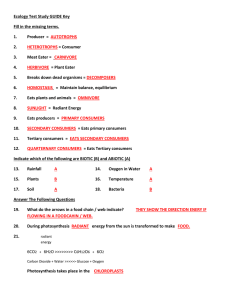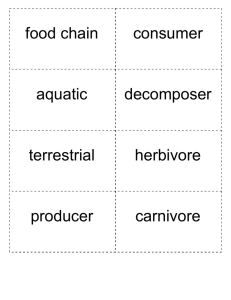NAME
advertisement
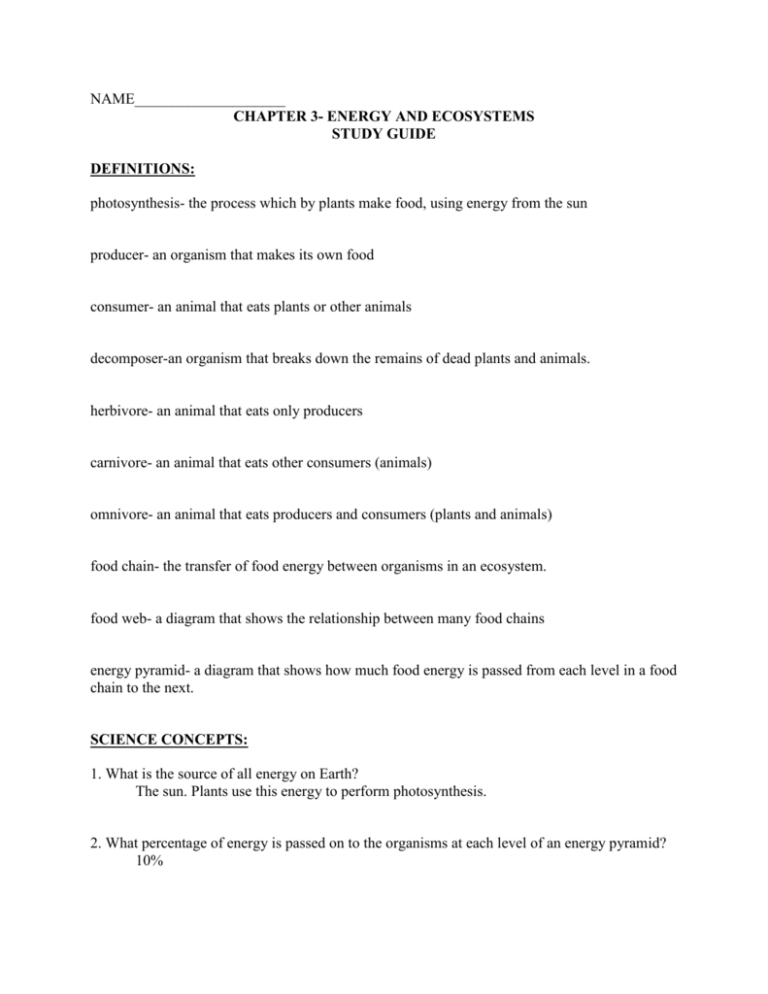
NAME____________________ CHAPTER 3- ENERGY AND ECOSYSTEMS STUDY GUIDE DEFINITIONS: photosynthesis- the process which by plants make food, using energy from the sun producer- an organism that makes its own food consumer- an animal that eats plants or other animals decomposer-an organism that breaks down the remains of dead plants and animals. herbivore- an animal that eats only producers carnivore- an animal that eats other consumers (animals) omnivore- an animal that eats producers and consumers (plants and animals) food chain- the transfer of food energy between organisms in an ecosystem. food web- a diagram that shows the relationship between many food chains energy pyramid- a diagram that shows how much food energy is passed from each level in a food chain to the next. SCIENCE CONCEPTS: 1. What is the source of all energy on Earth? The sun. Plants use this energy to perform photosynthesis. 2. What percentage of energy is passed on to the organisms at each level of an energy pyramid? 10% 3. Be able to explain the stages in the nitrogen cycle. (Draw a diagram below) Nitrogen is fixed by bacteria in the soil or by lightning. Plants use the nitrogen to grow. Animals eat the plants and get the nitrogen. Animals and plants die, they decay, and the nitrogen is returned to the soil and the cycle starts again. 4. What does a plant use to perform photosynthesis (what does the plant need)? What does the plant give off as part of this process? Plants need CO2, water, sunlight, and chlorophyll to perform photosynthesis. Plants produce sugars (for the plant) and give off oxygen as a byproduct. 5. Draw a simple food chain that includes a producer, a first-level consumer, a second-level consumer, and a third level consumer. Be sure the arrows show the flow of energy. grass------- mouse-------fox--------hawk 6. Explain what happens to animals in a food web if one of the species of animals decreases in number. The animals that eat that animal will decrease because they will not have enough food. The organisms that the first animal eats will increase because nothing will be eating them. 7. Where do decomposers fit into the food chain? What is their job? What are some examples of decomposers? Decomposers are at the end of the food chain. They connect the end back to the beginning because they put nutrients back into the soil that the producers use to grow. Examples of decomposers include mushrooms, fungi, and bacteria.
